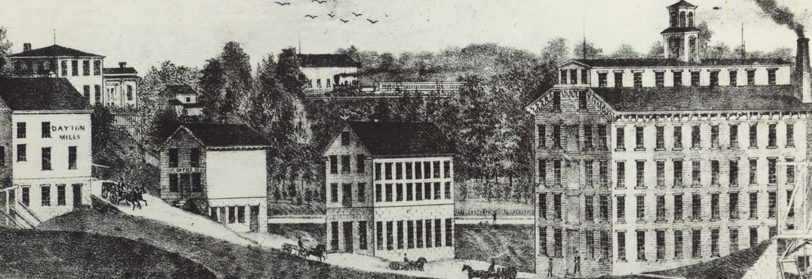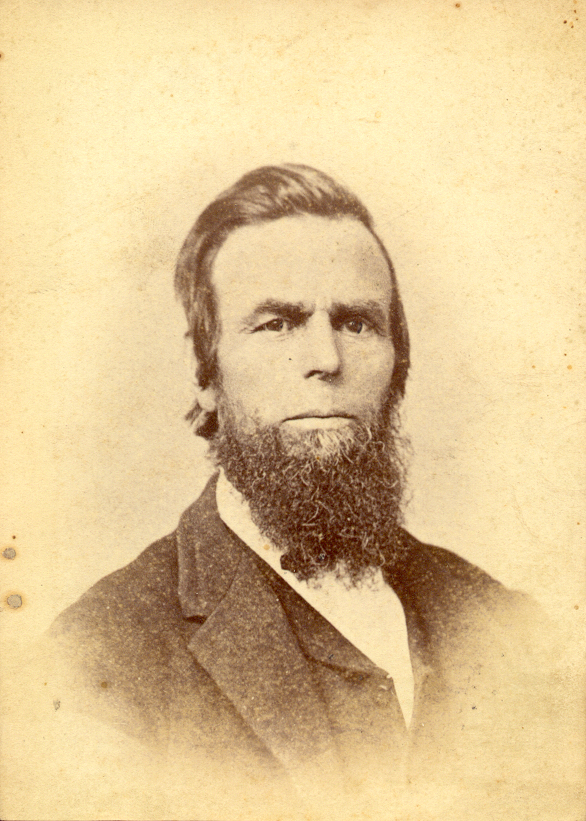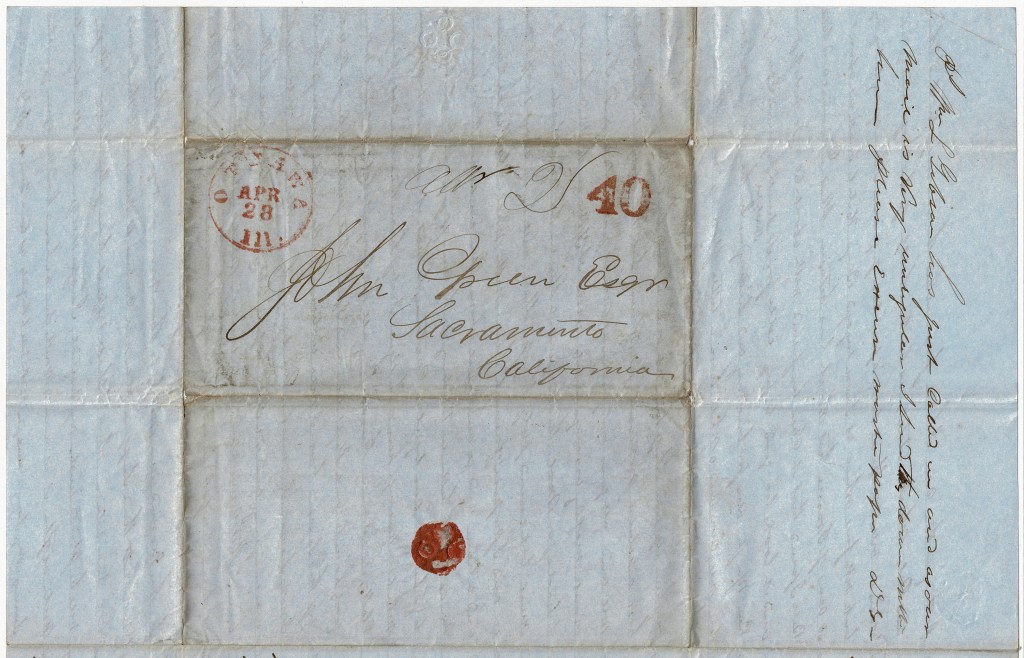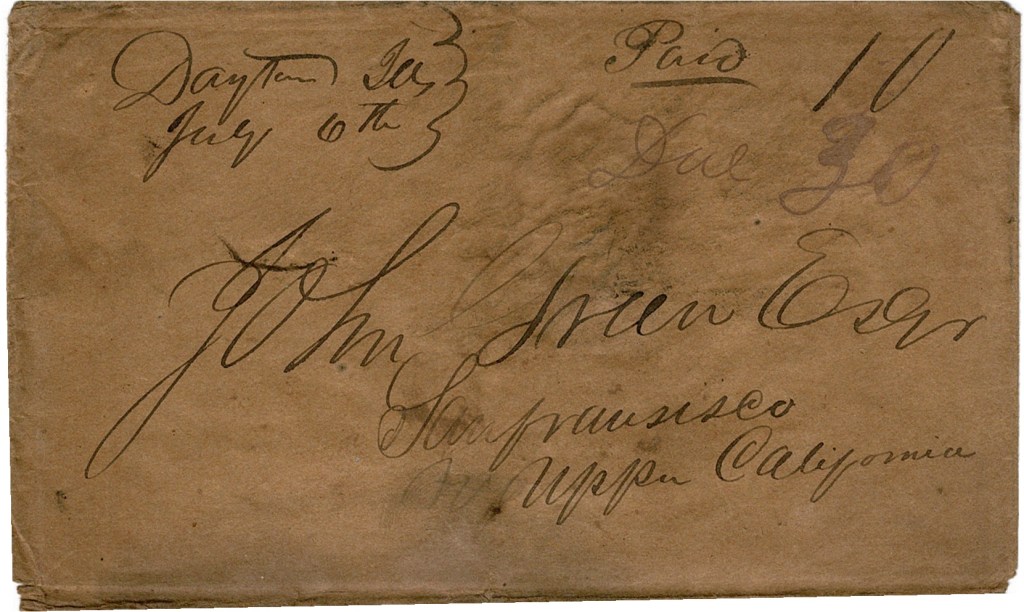David Green was ten years old when he came to Illinois in 1829 with his family. His father, John Green, had organized a party of settlers to move from Ohio to Illinois. David and his older brother, Jesse, were doing men’s work from the very start. Jesse later described some of their efforts in the initial building of a dam to drive the mill:
Whilst the men were getting out the timber for the mill and dam, which had to be built to intersect a small island, brother David and myself took the contract of scraping out the race or waterway for a distance of about a half mile (he being ten, and I twelve years old). We each had a pair of oxen and an old fashioned scraper. I sometimes had to help him load and dump his scraper and vice versa. We had the race completed by the time the mills were ready to draw their gates.
The winter of 1838-9 David and Jesse went back to Ohio, intending to go to school but their uncle Isaac Green persuaded them to take a room in his house where the school teacher boarded. They both claimed that the boys would make better progress than by attending school, as the teacher would give them his entire attention when not in school. This one term of school in Ohio and one other back home under Reuben Miller was the extent of their formal education.
David and brother Jesse, under the name of J. & D. Green, ran the first woolen mill, built in 1840. It was a building 32 by 60 feet, three stories high. It at first contained but one set of machinery consisting of three separate carding machines, a jack of 126 spindles, and four power looms, and two broad, and one narrow hand loom. Later, when the large stone mill was built, they took into partnership their brother-in-law, Oliver W. Trumbo. In 1844, David took over the additional position of manager of the Green grist mill from his father.
On Christmas Eve 1847 David married Mary Stadden, the daughter of William and Judah (Daniels) Stadden. William and his family arrived in the Dayton area in 1830. He built a flour mill at Dayton and became a prominent figure in La Salle County, serving as sheriff for two terms and elected twice to the State Senate.
When William Stadden died in November, 1848, David was named the executor of his will. The estate had many uncollected receipts and outstanding debts, which required many court appearances to resolve. It was at this time that word of the discovery of gold in California arrived and brother Jesse resolved to go West himself, with a party of Dayton men.
I’ve always felt sorry for David being left at home while his brothers went off to California, but someone had to stay home and manage the farm and the mills. Since David was deeply involved in settling his father-in-law’s estate, he also dealt with the necessary changes at home. The farm was rented to the Hite family, who moved into the Green house. Barbara Green and the younger children, Rachel, Rebecca, and Isaac, moved to the hotel, where they were joined by daughter Katherine Dunavan, whose husband, George, was one of the gold-seekers.
David was therefore left in charge of the woolen mill, the grist mill, and the store, as well as the “Golden Widows”. As the only man of the family his responsibilities were large. His sisters, Nancy and Katherine, were also golden widows.
In 1852 David was proud to advertise that the mills had just undergone thorough repairs and were now so arranged that six run of burrs could be turned on custom work or merchant either, which made the “Old Pioneer” one of the best custom mills in the state; as the four run of merchant burrs, bolts, &c., could be used for custom work whenever required.
By the 1870s, David had taken one of his sons in business with him. The Ottawa Free Trader reported:
The mill at Dayton, rebuilt a few years ago and lately put in thorough repair is well known as one of the best in Northern Illinois. It has always been popular and famous for the excellence of its work, and with its present management, in the hands of D. Green & Son, it will more than sustain its old reputation.
In 1879 David repaired the old shop south of the flouring mill in order to use it to manufacture drain tile. A tile machine with brick attachment was ordered and installed and the firm of D. Green & Son announced that they would be making brick in short order. The clay around Dayton was of an excellent quality and made good substantial brick and tile.
By then, David had retired from active participation in the day to day business of D. Green & Sons. He may have suffered from depression, as the 1880 census listed him as “melancholy”. That census was taken in June and on September 2, David died.








